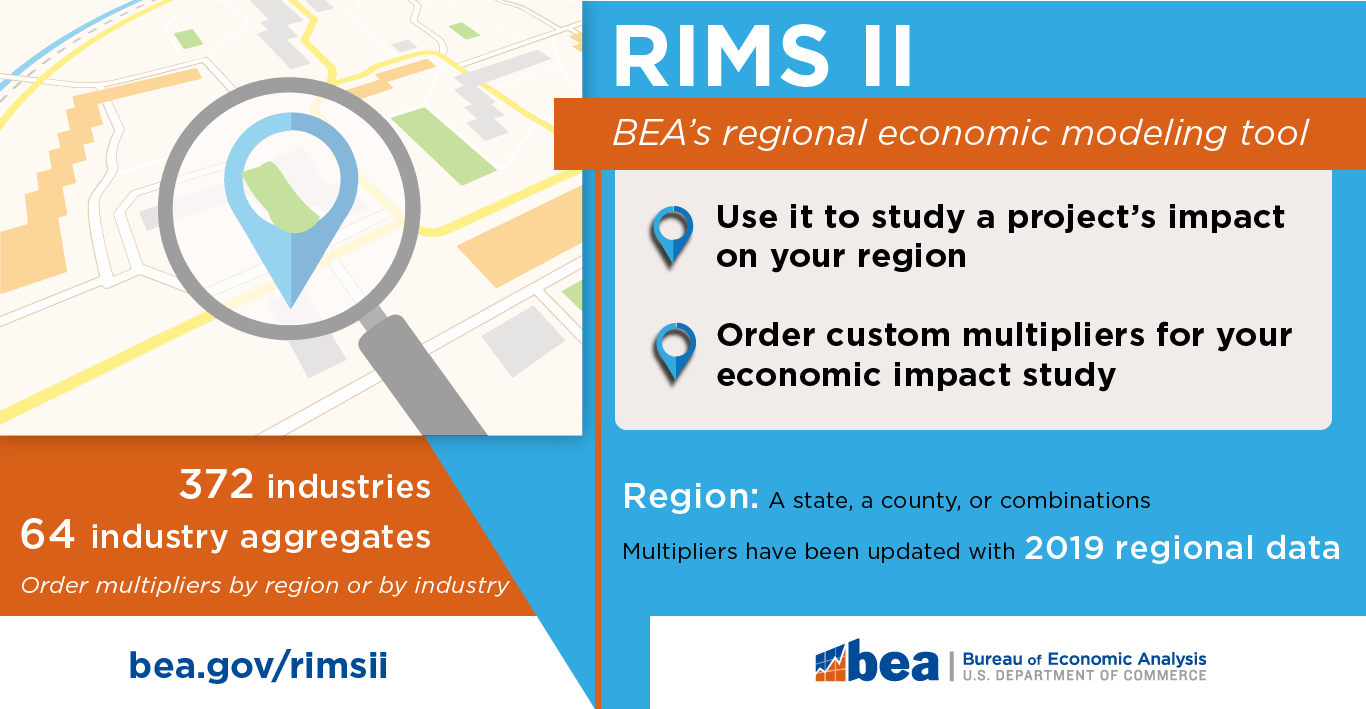How would expanding a community college, building a new factory, or increasing government spending on roads impact your local economy? BEA has a tool that can help answer questions like these.
Local planners, businesspeople, and policymakers use the Regional Input-Output Modeling System to predict the potential economic impacts of a variety of projects and events, even natural disasters like hurricanes. The modeling system, known as RIMS II, was updated March 30 with BEA’s 2019 regional data.
The model’s assumptions about business, household, and government spending are based on pre-pandemic patterns, which can help assess projects planned for a period of more normal economic conditions. Its uses for studying a widely disruptive event like the COVID-19 pandemic are limited. See “Uses of RIMS II Multipliers—COVID-19” for guidance on ways the tool can help study some pandemic effects.
RIMS II is based on BEA’s national input-output tables, a comprehensive picture of the goods and services that industries sell to each other, as well as to consumers. RIMS II adjusts the national data for the industries in a particular region, producing “multipliers” that are used to estimate how the economic effects of a project, for example building a new stadium, would ripple through that region’s businesses and households. The multipliers could be used to estimate the stadium’s effects on the region’s gross domestic product, gross output (sales), employment, and earnings.
RIMS II offers multipliers for 372 industries at the county level. Because the model is customized, BEA charges a processing fee of $275 per region, which can consist of one county or a group of contiguous counties or states.
To learn more about using RIMS II multipliers in economic impact studies, see the RIMS II user's guide. Case studies, FAQs, and instructions for ordering multipliers for a region or by industry are available on the RIMS II webpage.
